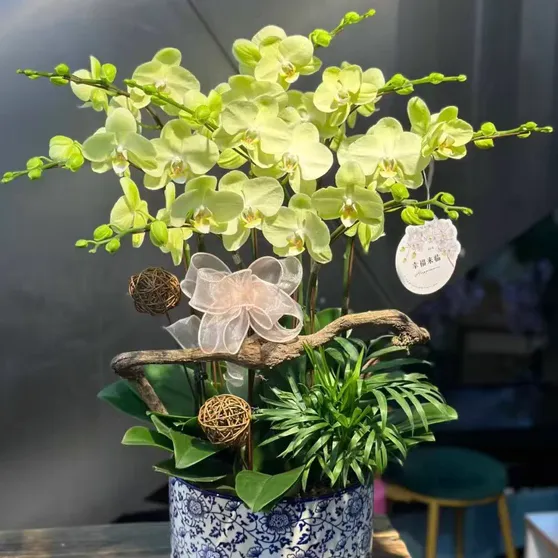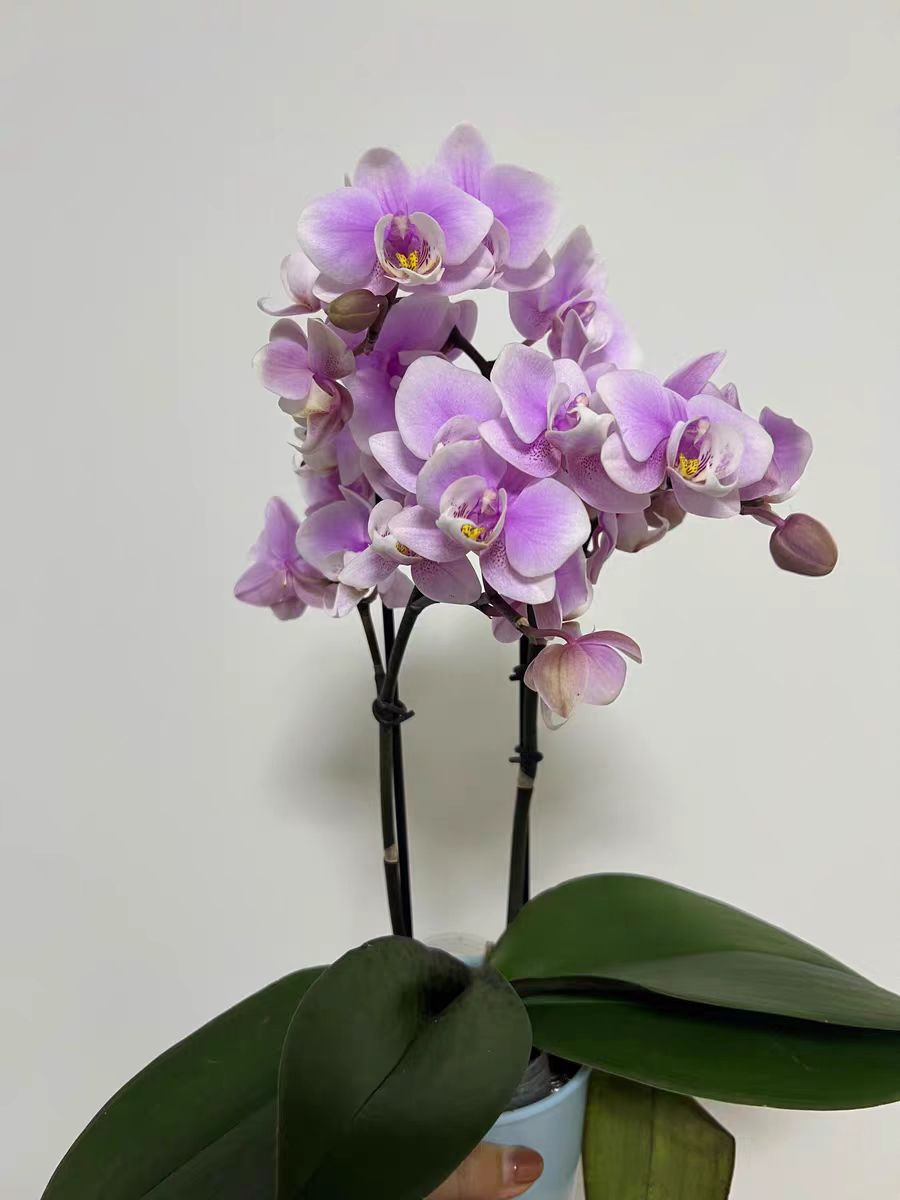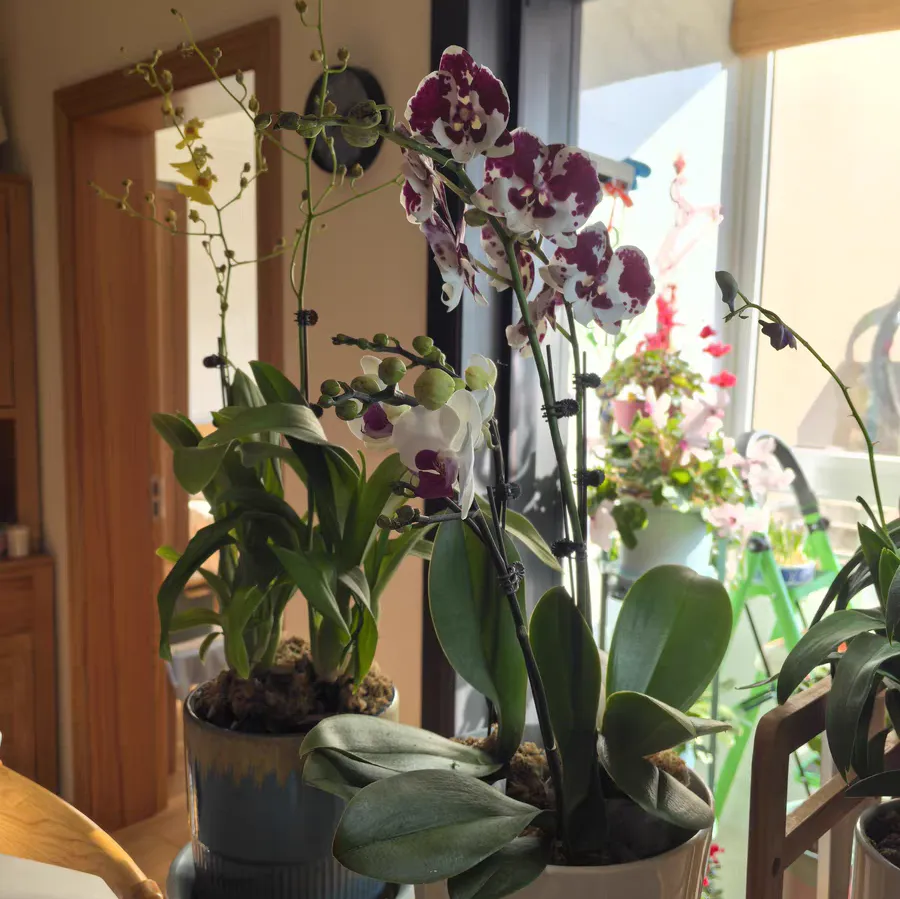Phalaenopsis orchids are highly ornamental, and many flower enthusiasts are fond of them. Today, I'd like to introduce to you a large-flowered European variety of Phalaenopsis called "Sunbath".
The petals of the "Sunbath" Phalaenopsis are a clear light green, pure and translucent. The yellowish-white lip is dotted among them, making the flower come to life instantly, and it's really beautiful.
The "Sunbath" Phalaenopsis generally blooms from late winter to early spring, approximately from November to March of the following year. Its flowering period is extremely long, and with normal maintenance, it can last for 2 to 3 months. If the temperature and humidity at home are suitable, it can even bloom for a longer time.
During maintenance, if you water the "Sunbath" Phalaenopsis too much, the roots will be short of oxygen, causing the leaves to turn yellow. You should drain the water in a timely manner and water it again when the soil is dry. Lack of light will prevent the leaves from carrying out photosynthesis, and they will also turn yellow. You need to move it to a bright place so that it can enjoy a gentle sunbath. If it is infected by diseases and pests, you should cut off the diseased leaves and spray them with carbendazim or Huahuashen solution for prevention and treatment.
Spring Maintenance:
As the temperature rises in spring, it is the peak growing season for the "Sunbath" Phalaenopsis. Water it moderately. Water it when you see the surface of the soil getting dry, and make sure to water it thoroughly each time. Apply a thin flower fertilizer once a week, which can promote the growth of the plant. Also, place it in a well-ventilated and brightly lit place, but avoid direct exposure to strong light. In addition, you can repot the "Sunbath" Phalaenopsis in spring, replacing the loose and breathable planting medium to allow the roots to grow better.
Precautions:
1. Temperature Control: The "Sunbath" Phalaenopsis prefers a warm environment. There is a large temperature difference between day and night in spring, so pay attention to keeping it warm to ensure that the nighttime temperature is not lower than 15°C.
2. Sunshade Protection: The sunlight becomes stronger day by day in spring. It is necessary to provide appropriate shading for the "Sunbath" Phalaenopsis at noon to prevent the leaves from being sunburned.
3. Pest and Disease Prevention: Spring is a season prone to diseases and pests. Regularly check the condition of the plant and do a good job in prevention and control.
By mastering these maintenance tips, you can make the "Sunbath" Phalaenopsis thrive with abundant flowers and lush leaves every year!
What is the reason for the yellowing of the leaves of the Phalaenopsis that has been sun - bathed?

Share with
Tagged in :




Leave a Reply